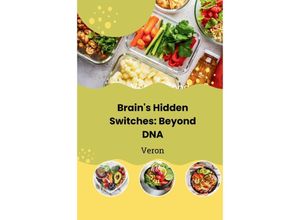Brain's Hidden Switches: Beyond DNA Our understanding of the brain has traditionally focused on
DNA the blueprint of life. However recent research unveils a fascinating truth - DNA is just
the first act in the grand play of brain function. Beyond the rigid code of genes lies a hidden
layer of control - epigenetic mechanisms that act as the brain's hidden switches dynamically
fine-tuning its operations.Imagine a beautifully composed symphony. The sheet music (DNA)
outlines the melody and harmony but the conductor (epigenetics) brings the music to life
adjusting tempo volume and individual instrument contributions to create a nuanced and
dynamic performance. This analogy aptly describes the interplay between DNA and epigenetics in
the brain.Epigenetics literally meaning above genetics refers to modifications that influence
gene expression without altering the underlying DNA sequence. These modifications act like
dimmer switches on genes controlling how much protein (the functional output of genes) is
produced in different brain regions and throughout an organism's lifespan.There are two key
epigenetic mechanisms at play: DNA methylation and histone modifications. DNA methylation
involves adding a chemical tag to DNA often silencing gene activity. Conversely histone
modifications loosen or tighten the packaging of DNA around proteins called histones. Tightly
packed DNA is less accessible for protein production while looser packaging allows for
increased gene expression.

